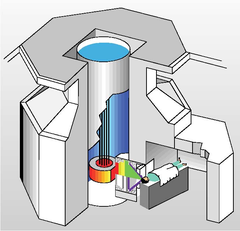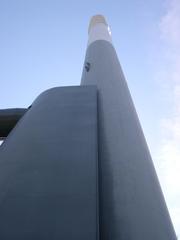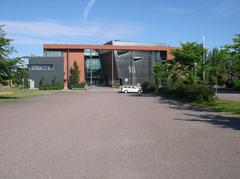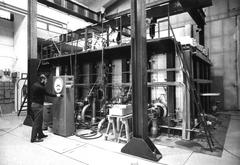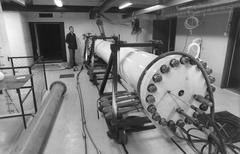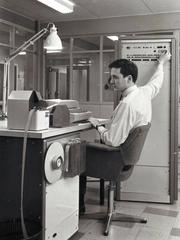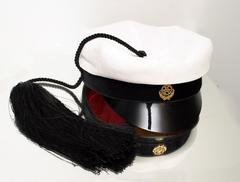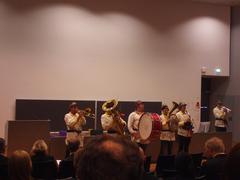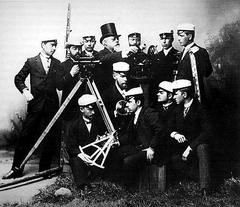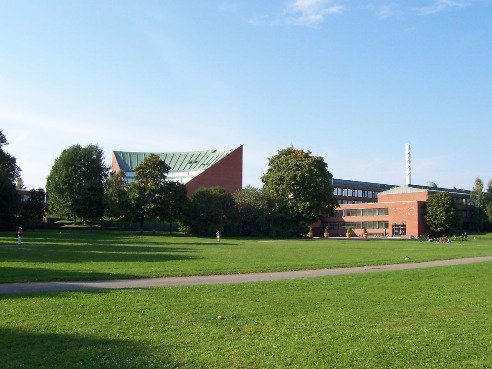
Helsinki University of Technology Otaniemi Campus Visiting Guide: Tickets, Hours, and Tips
Date: 14/06/2025
Introduction
Discovering the Otaniemi campus—formerly Helsinki University of Technology, now the beating heart of Aalto University—is an immersive journey into Finnish technological innovation, modernist architecture, and vibrant academic life. Established in 1849, the institution has evolved from a small technical school into a multidisciplinary university that has shaped Finland’s engineering and design legacy. The Otaniemi site in Espoo is internationally recognized for its architectural landmarks, especially those designed by Alvar Aalto and other Finnish masters. Today, Otaniemi is a living museum of modern architecture, a research powerhouse, and a symbol of interdisciplinary collaboration.
Whether you’re an architecture enthusiast, historian, or traveler seeking practical details, this comprehensive guide covers everything you need to make the most of your visit—history, opening hours, ticketing, accessibility, tours, and nearby attractions (Aalto University, Visit Espoo, Wikipedia).
Contents
- Historical Overview
- Cultural and Academic Impact
- Visiting Hours, Tickets, and Accessibility
- Guided and Self-Guided Tours
- Key Sites to Visit
- Getting There and Around
- Visitor Services and Amenities
- Tips for a Memorable Visit
- Frequently Asked Questions (FAQ)
- Conclusion and Final Tips
- Sources
Historical Overview
Origins and Early Development (1849–1908)
Founded as a “manufacture and handicraft school” by decree of Emperor Nicholas I, the institution began in Helsinki’s Domus Litonii building (Wikipedia). Its mission was to foster technical expertise for Finland’s growing industries. By 1878, it had evolved into the Polytechnical Institute, focusing on advanced engineering education.
Growth to University Status (1908–1966)
With Finland’s industrial expansion in the early 20th century, the school was elevated to university status as Teknillinen korkeakoulu (TKK) in 1908. The new status reflected its critical role in producing skilled engineers and architects for the nation’s modernization (Wikipedia; University of Helsinki History).
Move to Otaniemi and Architectural Milestones (1955–2010)
Rapid post-war growth led to the relocation of the university to Otaniemi, Espoo. Construction began in 1955 with a campus masterplan by Alvar Aalto, emphasizing integration with the natural landscape. The main phase completed in 1966, featuring Aalto’s iconic Undergraduate Centre and other modernist buildings (Aalto University; Visit Espoo).
Formation of Aalto University (2010–Present)
In 2010, the merger of Helsinki University of Technology, the Helsinki School of Economics, and the University of Art and Design Helsinki created Aalto University, propelling Otaniemi into a new era of interdisciplinary excellence (Aalto University). Today, the campus is a hub for more than 13,000 students, 400 professors, and a thriving community engaged in research and innovation.
Cultural and Academic Impact
Otaniemi’s influence stretches far beyond its academic walls. Alumni have shaped Finland’s technological and architectural landscape. The campus stands as a testament to the country’s emphasis on innovation, sustainable design, and collaborative research (Aalto University; Visit Espoo). The legacy of Alvar Aalto and other architects is physically embedded in the campus, making it a global destination for architecture aficionados.
Visiting Hours, Tickets, and Accessibility
Visiting Hours
- Most buildings (e.g., Undergraduate Centre, Dipoli): Weekdays 8:00 AM–6:00 PM
- Some facilities and chapels: Reduced hours on weekends/holidays—always check Aalto University Campus Info for updates.
Tickets
- General entry to campus and main buildings: Free
- Guided tours or exhibitions: May require advance booking and/or tickets (Aalto University Campus Tours)
Accessibility
Otaniemi is wheelchair accessible, with ramps, elevators, and accessible restrooms in all key buildings. The Aalto University metro station and campus pathways are designed for pedestrian and mobility access.
Guided and Self-Guided Tours
- Self-Guided: Download maps and brochures or use the Virtual Campus Experience.
- Guided Tours: Bookable via the Aalto University website or through Visit Espoo. Expert guides, including architecture specialists, offer in-depth insights.
- Virtual Tours: Available for those who wish to explore remotely.
Key Sites to Visit
- Undergraduate Centre (Otakaari 1): Alvar Aalto’s modernist masterpiece, featuring a fan-shaped auditorium and terraced festival square (Daylight & Architecture Tour).
- Dipoli: Designed by Reima and Raili Pietilä, now the main building and visitor center (Artchitectours: Otaniemi Campus).
- Harald Herlin Learning Centre: Aalto-designed, recently renovated library and student hub.
- Otaniemi Chapel: Renowned for its tranquil integration with nature (Aalto University: Campus History).
- Polytechnical Students’ Museum: By appointment, delving into Finnish student culture (Polytechnical Students’ Museum).
- Marsio and Väre Buildings: Contemporary additions reflecting Aalto’s evolving architectural vision.
Getting There and Around
- Public Transport: Metro (Aalto University station), buses, and the new light rail line 15 provide efficient access (HSL Journey Planner).
- By Car: Limited parking; check campus maps and parking info.
- Cycling/Walking: Dedicated paths and bike racks throughout campus.
- From Helsinki Airport: Connect by local train/metro or light rail.
Visitor Services and Amenities
- Tourist Information: Helsinki Tourist Information Office, Aleksanterinkatu 24.
- Dining: Campus cafeterias, cafés (such as Cafetoria Aalto), and the A Bloc shopping mall.
- Accommodation: Hotels nearby include Heymo 1 by Sokos Hotels, Noli Otaniemi, Radisson Blu Espoo (Visit Espoo: Accommodation).
- Wi-Fi: Free guest access available campus-wide.
Tips for a Memorable Visit
- Plan Ahead: Check Aalto University event calendar for lectures, exhibitions, and festivals.
- Join a Tour: Guided tours deepen your understanding of the campus’s history and architecture.
- Photography: The blend of modernist and contemporary buildings creates striking visuals.
- Explore Beyond Campus: Walk the Espoo Waterfront, visit Laajalahti Nature Reserve, or tour local breweries (Fat Lizard Brewery).
- Seasonal Visits: Spring–autumn is ideal for outdoor exploration.
Frequently Asked Questions (FAQ)
Q: What are the Otaniemi campus visiting hours?
A: Most public buildings are open weekdays 8:00 AM–8:00 PM; check individual building schedules.
Q: Is there an entrance fee?
A: No, campus and most buildings are free to enter. Special tours/exhibitions may require tickets.
Q: How accessible is the campus?
A: Fully accessible, with ramps, elevators, and clear signage.
Q: Can I book a guided tour?
A: Yes, via Aalto University or local operators.
Q: What are nearby attractions?
A: EMMA – Espoo Museum of Modern Art, Tapiola district, Laajalahti Nature Reserve, and Helsinki’s design district.
Q: What’s the best time to visit?
A: Late spring to early autumn for pleasant weather and outdoor activities.
Conclusion and Final Tips
Otaniemi campus is a unique fusion of Finnish innovation, history, and architectural splendor. From Alvar Aalto’s legacy to contemporary research and student culture, every corner invites exploration. Free access, practical amenities, and excellent public transport connections make Otaniemi an unmissable stop for architecture lovers, academics, and cultural explorers. For the latest updates, events, and self-guided resources, check official channels and consider using the Audiala app. Your journey into the heart of Finnish technological and cultural heritage begins here.
Sources and Official Links
- Helsinki University of Technology (Wikipedia)
- Aalto University Campus Information
- Architectural Gems of Otaniemi (Aalto University)
- Otaniemi Campus Visitor Guide (Visit Espoo)
- Exploring Otaniemi Campus (Visit Espoo)
- Helsinki Tourist Information (My Helsinki)
- Aalto University: Campus of the Future
- Daylight & Architecture Tour
- Artchitectours: Otaniemi Campus
- Polytechnical Students’ Museum
- HSL Journey Planner

